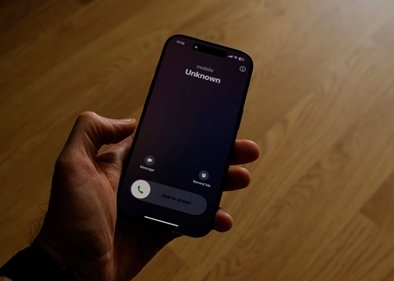Vodafone and MediaTek, a global leader in semiconductor solutions, have reached a milestone after successfully testing 5G uplink speeds of up to 277 megabits per second (Mbps) in the drive to meet future connectivity demand for user generated content and artificial intelligence (AI) applications.
This is an important development in the provision of fast connectivity for customers uploading videos and files from their smartphones to the cloud and social media sites. While approximately 90% of mobile traffic traditionally utilises the downlink channel from mobile masts to users’ smartphones, this trend is evolving. Consumers are increasingly uploading their own videos and content online, necessitating an ever-faster uplink connection.
For example, a typical video call needs at least 0.5Mbps both in uplink and downlink, whereas streaming video from a smartphone requires between five and 15 Mbps depending on how many frames are squeezed into each second of video and its picture quality.
Continuous growth in traffic and performance
Marco Zangani, Vodafone Director of Network Strategy & Architecture, said: “Vodafone is working hard to meet rapid shifts in demand for fast and reliable connectivity. We are continually improving the performance of our European networks to meet growth in traffic, a trend that’s unlikely to slow down especially with the popularity of video sharing sites and cloud services, as well as AI applications in the near future.”
In the latest technological breakthrough, Vodafone and MediaTek engineers combined the advanced capabilities of Vodafone’s 5G Standalone (5G SA) network – offering low-latency, fast speeds end-to-end – at its test facility near Madrid, Spain, with MediaTek’s latest M90 modem. MediaTek’s processor delivers download speeds of up to 12Gbps and boosts uplink performance by up to 20% based on the latest 5G specification - Release 17 – developed by industry body 3GPP.

Vodafone engineer Diego Armando Diaz was instrumental in achieving this 5G Uplink milestone.
The companies were able to further boost the 5G uplink connection by using carrier aggregation to combine various spectrum channels. This increases the capacity and speed of the connection, allowing more data to move quickly from devices to the network.
Additionally, Vodafone and MediaTek used MIMO (multiple input, multiple output) antennas to transmit two data streams simultaneously from a single smartphone to the nearest mast, as well as tested it with the two key mobile data transmission methods – Frequency Division Duplex (FDD) and Time Division Duplex (TDD). This is like adding extra 5G lanes to an existing mast. TDD is used to provide capacity at high frequency bands and is used in urban areas, and FDD is used on lower frequency bands to provide wider coverage.
Flexible chipsets
The companies were also able to show that spectrum and data transmission efficiency is also improved in addition to increasing upload speeds for more customers. Overall network performance is also enhanced by using MediaTek chipsets that can seamlessly switch between uplink technologies, reducing interference.
HC Hwang, General Manager of Wireless Communication System and Partnership at MediaTek, added: “Enhancing uplink performance using groundbreaking technology will ensure next generation 5G experiences continue to support users globally.”
Currently, commercial smartphones do not yet support this feature (as they need uplink MIMO in FDD), but Vodafone and MediaTek aim to drive the development of compatible devices for the benefit of smartphone users everywhere.

























